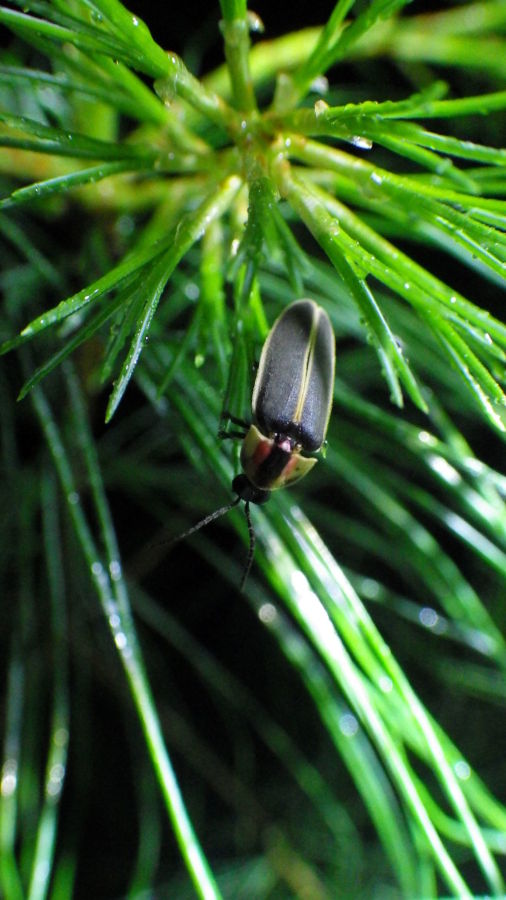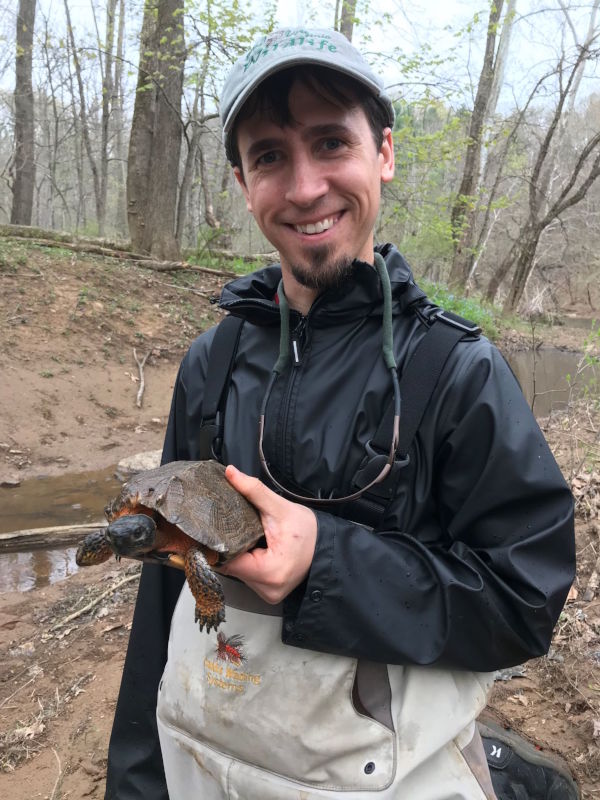Synchronous Fireflies

This story, like most, has a backstory. What follows is how something extraordinary was recently discovered in Watoga State Park.
A little over a year ago Mack Frantz, a zoologist with West Virginia Department of Natural Resources, was informed by a retired biologist from the same agency that she had observed a rare firefly, a lightning bug if you prefer, within Watoga State Park. She even provided geographic coordinates of where her sighting took place.
A small group of people led by USDA biologist Tiffany Beachy that included Sam Parker from Droop Mountain State Park Mary Dawson of the Dark Sky Park initiative and I hiked out to the location at 10 pm on a clear evening in mid-June of this year. After 20 minutes or so, we were treated to a sight unlike anything we had ever seen.
Suddenly, countless fireflies, all flashing simultaneously, lit up the forest like a string of Christmas lights. As fast as the display of bioluminescent lights had started, they stopped, and in perfect unison.
It’s official now, Watoga State Park has a population of synchronous fireflies.
Never heard of a synchronous firefly? That’s not so unusual, neither did I until this summer. But the appeal of these insects is extraordinary, and they may mean a lot more to the park and Pocahontas County as a whole, than we may think.
Unique Fireflies
So, what are synchronous fireflies, and why are they such a big deal?
Mack Frantz describes the synchronous firefly, as, “unique among most fireflies in that males synchronize their flashing displays to rhythmically repeat ‘flash trains.’ Flash-trains are a species-specific group of flashes reported at regular intervals.”

This virtuoso display of aerial light by the male is meant to attract a female mate on the ground and lasts from one to three hours each night through the relatively short mating season.
“Males do not live long, so the displays only last a few weeks. Additionally, synchronous fireflies are habitat specialists, typically requiring high elevation moist forests. That means you have to be in the right place and time to find them.” Said Mack.
Mack said that Watoga State Park is one of only two populations confirmed in West Virginia on public lands as of this summer. He added that “The WV Department of Natural Resources will be working closely with state and federal partners to determine the best way to conserve and manage this species. That would include making the park’s population publicly accessible for viewing without disturbing the species.”
Another condition that is a must for maintaining a population of synchronous fireflies is a minimal amount of artificial light; they thrive in the darkest locations.
“Synchronous fireflies are highly sensitive to light pollution such as that from flashlights or vehicle headlights. The State Parks and Wildlife Diversity unit of West Virginia DNR will coordinate best-management practices for guided walks that permit public viewing of synchronous fireflies with minimal impact. “added Mack.
Dark Sky
It is a fortunate coincidence that Watoga State Park entered upon a project to become qualified for a dark sky designation in 2019, a mere year before the synchronous fireflies were discovered in the park.
Louanne Fatora of the Watoga State Park Foundation, who, along with Mary Dawson, is spearheading this initiative, says, “The discovery of the synchronous firefly bolsters our efforts to establish Watoga State Park as a certified International Dark Sky Park.
Watoga State Park and Calvin Price State Forest, comprise 20,000 acres of habitat that will gain protection from artificial light pollution.”
Loss of habitat for the synchronous firefly can be mitigated with this designation, a critical factor in maintaining healthy populations.
“Synchronous firefly populations have been declining, and they are the only species in America that synchronize flashing light patterns. So it is crucial that we guard their forested, dark sky habitat for future generations of visitors to Watoga State Park.” Says Louanne.
Based upon the experience of other parks in the eastern United States that have populations of synchronous fireflies, there is considerable public demand to view their flashing displays.
Great Smoky Mountains National Park in Tennessee is a perfect example of the popularity of these fireflies. Before park officials controlled the viewing sites, hundreds of cars were coming into the park each evening during the relatively short mating period.
As would be expected, the people were parking anywhere they could and trampling through the sensitive areas with flashlights, endangering both the females on the ground and interrupting the flash cycles of the males with their flashlights.
In 2015 park officials created a lottery system and closed the main road into the public viewing areas. During the eight nights of regulated public viewing, 800 to 1000 people are shuttled into the sites per night.
In 2019 there were 29,000 applications to see the fireflies and far fewer openings, further demonstrating the popularity of synchronous fireflies. *
The experience in the Smokies and other locations with fireflies presents a clear implication for us here in Pocahontas County – How are we going to handle the expected influx of visitors to view the synchronous fireflies?
How this considerable problem is to be managed rests entirely upon one individual, Jody Spencer, superintendent of Watoga State Park.
When I talked to Jody, he was clearly excited about the discovery of the synchronous fireflies in the park. So much so, he was not only out there watching them on numerous evenings with his family, he found another population of the fireflies in a different part of the park. **
Jody said, “We want the public to have the opportunity to see these marvelous creatures and do it in a way that will ensure the continuation of their populations at Watoga State Park.
Public access will require certain restrictions and guidelines to protect the fireflies. And, there are a number of considerations beyond that, such as concerns for the evening quietude and darkness that the guests in the cabins come here for.”
Managing a park with a variety of resources and activities is a balancing act for park superintendents. Be assured, Jody and his staff will develop a plan that works well for a public eager to see this extraordinary event of light and protect the fireflies at the same time.
The expected increase of new visitors to Pocahontas County to view the night sky and see the light-show of the synchronous fireflies has the potential to bring more folks to our area. After all, we don’t call our county Nature’s Mountain Playground for nothing.
To look at the broader picture of what these marvelous fireflies might mean to Pocahontas County, we need to get some input from the one person who knows best how to make it work as a popular attraction, not only for Watoga State Park but the county as a whole.
Pocahontas County Convention and Visitors Bureau
Having already partnered with the Watoga State Park Foundation on the Dark Sky Park initiative, Cara Rose, Executive Director of the Pocahontas County CVB was thrilled to hear about the discovery of the synchronous fireflies at Watoga.
She took the time to call me while on vacation last week and said that the two programs, dark skies, and the synchronous fireflies, dovetail with each other in ways that can significantly benefit the park and local businesses. “After all, the wonders of nature are our product here in Pocahontas County,” Cara said.
Cara offered the support of the CVB in marketing the opportunities for public viewing of the fireflies, saying, “I see it as an opportunity to make use of something extraordinary that enhances what we already have here in Pocahontas County.
I hear it from visitors and locals all of the time, “I love it here in Pocahontas County; it is a special place.” Now, we can add one more item to the list of things that make it unique – Synchronous fireflies.
From the mountain trails of Watoga State Park,